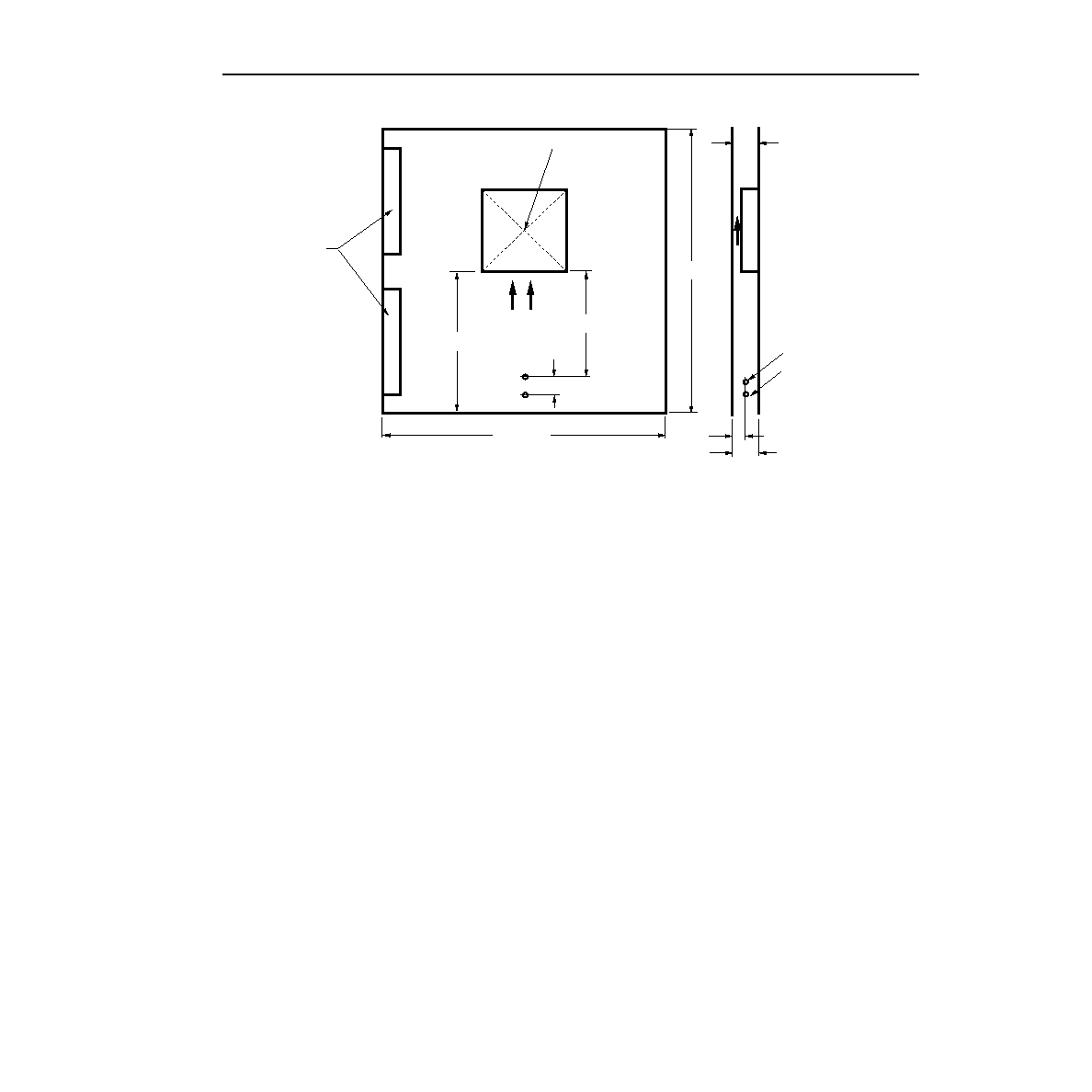- 您現(xiàn)在的位置:買賣IC網(wǎng) > PDF目錄170246 > CW025AJ-M (LINEAGE POWER LLC) 2-OUTPUT 13.125 W DC-DC REG PWR SUPPLY MODULE PDF資料下載
參數(shù)資料
| 型號(hào): | CW025AJ-M |
| 廠商: | LINEAGE POWER LLC |
| 元件分類: | 電源模塊 |
| 英文描述: | 2-OUTPUT 13.125 W DC-DC REG PWR SUPPLY MODULE |
| 封裝: | MODULE-7 |
| 文件頁(yè)數(shù): | 3/16頁(yè) |
| 文件大小: | 559K |
| 代理商: | CW025AJ-M |
第1頁(yè)第2頁(yè)當(dāng)前第3頁(yè)第4頁(yè)第5頁(yè)第6頁(yè)第7頁(yè)第8頁(yè)第9頁(yè)第10頁(yè)第11頁(yè)第12頁(yè)第13頁(yè)第14頁(yè)第15頁(yè)第16頁(yè)

Data Sheet
April 2008
Lineage Power
11
36 Vdc to 75 Vdc Input; 25 W
CW025 Dual Output-Series Power Modules:
Thermal Considerations
8-866(C).a
Note: Dimensions are in millimeters and (inches). Drawing is not to scale.
Figure 15. Thermal Test Setup
50.8
(2.00)
12.7 (0.50)
101.6
(4.00)
203.2 (8.00)
AIRFLOW
MEASURE CASE
TEMPERATURE AT
CENTER OF UNIT
CONNECTORS TO
LOADS, POWER
SUPPLIES, AND
DATALOGGER,
6.35 (0.25) TALL
203.2
(8.00)
9.7 (0.38)
19.1 (0.75)
AIR VELOCITY PROBE
AMBIENT TEMPERATURE
THERMOCOUPLE
AIR-
FLOW
The 25 W dual output power modules are designed to
operate in a variety of thermal environments. As with
any electronic component, sufcient cooling must be
provided to help ensure reliable operation of the unit.
Heat-dissipating components inside the module are
thermally coupled to the case. Heat is removed by con-
duction, convection, and radiation to the surrounding
environment.
The thermal data presented is based on measure-
ments taken in a wind tunnel. The test setup shown in
Figure 15 was used to collect data. Actual performance
can vary depending on the particular application
environment.
Basic Thermal Performance
The CW025 Dual Output-Series Power Modules have a
separate power stage for each of the outputs. This
means that the maximum operating temperature can
be predicted quite closely by treating each output indi-
vidually and then summing the results. Figures 16
through 19 are used to predict the safe operating con-
dition for many different operating and environmental
conditions.
The method used to determine the maximum ambient
temperature at a given air velocity is a four-step pro-
cess:
1.
Find the power dissipated for output 1 by using the
appropriate chart (Figures 16 through 18) for a
particular output condition (IO1).
2.
Repeat step 1 for output 2 using Figures 16
through 18.
3.
Find the total power dissipated by summing the
power dissipated on each of the outputs: (PDout1 +
PDout2) = PDtotal
4.
Use the total power dissipated with Figure 19 to
determine the maximum ambient temperature at
different air velocities.
相關(guān)PDF資料 |
PDF描述 |
|---|---|
| CW030D | 1-OUTPUT 30 W DC-DC REG PWR SUPPLY MODULE |
| CW030C | 1-OUTPUT 30 W DC-DC REG PWR SUPPLY MODULE |
| CW0500-T3-TO | 808 nm, LASER DIODE |
| CW0500-90-DO | 808 nm, LASER DIODE |
| CW1000-HH-DT | LASER DIODE |
相關(guān)代理商/技術(shù)參數(shù) |
參數(shù)描述 |
|---|---|
| CW025BK1-M | 制造商:未知廠家 制造商全稱:未知廠家 功能描述:DC-to-DC Voltage Converter |
| CW025BK-M | 制造商:TE Connectivity 功能描述: |
| CW025CL-M | 功能描述:DC/DC轉(zhuǎn)換器 15V/-15V 0.83A 25W RoHS:否 制造商:Murata 產(chǎn)品: 輸出功率: 輸入電壓范圍:3.6 V to 5.5 V 輸入電壓(標(biāo)稱): 輸出端數(shù)量:1 輸出電壓(通道 1):3.3 V 輸出電流(通道 1):600 mA 輸出電壓(通道 2): 輸出電流(通道 2): 安裝風(fēng)格:SMD/SMT 封裝 / 箱體尺寸: |
發(fā)布緊急采購(gòu),3分鐘左右您將得到回復(fù)。